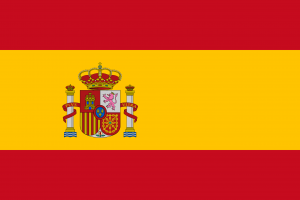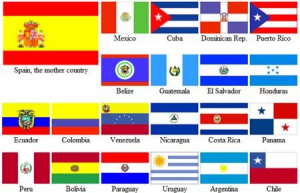Language/Spanish/Grammar/Definite-and-Indefinite-Articles
 Հայերէն
Հայերէն Български език
Български език 官话
官话 官話
官話 Hrvatski jezik
Hrvatski jezik Český jazyk
Český jazyk Nederlands
Nederlands English
English Suomen kieli
Suomen kieli Français
Français Deutsch
Deutsch עברית
עברית हिन्दी
हिन्दी Magyar
Magyar Bahasa Indonesia
Bahasa Indonesia فارسی
فارسی Italiano
Italiano 日本語
日本語 Қазақ тілі
Қазақ тілі 한국어
한국어 Lietuvių kalba
Lietuvių kalba Νέα Ελληνικά
Νέα Ελληνικά Şimali Azərbaycanlılar
Şimali Azərbaycanlılar Język polski
Język polski Português
Português Limba Română
Limba Română Русский язык
Русский язык Српски
Српски العربية القياسية
العربية القياسية Svenska
Svenska Wikang Tagalog
Wikang Tagalog தமிழ்
தமிழ் ภาษาไทย
ภาษาไทย Türkçe
Türkçe Українська мова
Українська мова Urdu
Urdu Tiếng Việt
Tiếng Việt
| ◀️ Nouns and Gender — Previous Lesson | Next Lesson — Subject Pronouns ▶️ |
Welcome to the world of Spanish grammar! In this lesson, we will explore the fascinating realm of definite and indefinite articles. Understanding how to use these articles is essential for effective communication in Spanish and will lay a strong foundation for your language learning journey.
Why Are Articles Important?
Articles are like signposts in a sentence. They help us understand whether we are talking about something specific or something more general. In English, we have "the" as a definite article and "a" or "an" as indefinite articles. In Spanish, we have a bit more variety with el, la, los, and las for definite articles, and un and una for indefinite articles. Each article has its own place and purpose in the language, so let’s dive into their usage!
Definite Articles[edit | edit source]
Definite articles are used to refer to specific nouns. In English, the word "the" is used for this purpose. In Spanish, we have four forms of the definite article:
- el: Used for singular masculine nouns.
- la: Used for singular feminine nouns.
- los: Used for plural masculine nouns.
- las: Used for plural feminine nouns.
To give you a clearer picture, let's look at some examples:
| Spanish | Pronunciation | English |
|---|---|---|
| el libro | el ˈli.βɾo | the book |
| la casa | la ˈka.sa | the house |
| los coches | los ˈko.tʃes | the cars |
| las flores | las ˈflo.ɾes | the flowers |
Usage of Definite Articles
1. Specificity: We use definite articles when we are talking about something specific that both the speaker and listener are familiar with.
- Example: El perro está en el jardín. (The dog is in the garden.)
2. General Statements: In Spanish, we can also use definite articles to make general statements about a category.
- Example: Los gatos son animales independientes. (Cats are independent animals.)
3. With Abstract Nouns: Definite articles are commonly used with abstract nouns.
- Example: La paz es importante. (Peace is important.)
4. Days of the Week: When talking about days of the week, we use the definite article.
- Example: El lunes es festivo. (Monday is a holiday.)
Indefinite Articles[edit | edit source]
Indefinite articles are used to refer to non-specific nouns. In English, this is where we use "a" or "an." In Spanish, we have two forms of indefinite articles:
- un: Used for singular masculine nouns.
- una: Used for singular feminine nouns.
- unos: Used for plural masculine nouns.
- unas: Used for plural feminine nouns.
Let’s see some examples:
| Spanish | Pronunciation | English |
|---|---|---|
| un libro | un ˈli.βɾo | a book |
| una casa | una ˈka.sa | a house |
| unos coches | unos ˈko.tʃes | some cars |
| unas flores | unas ˈflo.ɾes | some flowers |
Usage of Indefinite Articles
1. Non-Specificity: Indefinite articles are used when the noun is not specifically known to the listener.
- Example: Quiero un perro. (I want a dog.)
2. First Mention: When introducing something for the first time, we typically use an indefinite article.
- Example: Hay una casa en la colina. (There is a house on the hill.)
3. With Countable Nouns: Indefinite articles are common with countable nouns.
- Example: Tengo unos amigos. (I have some friends.)
4. To Indicate Quantity: When we want to indicate an unspecified quantity, we use indefinite articles.
- Example: Necesito unas galletas. (I need some cookies.)
Gender and Articles[edit | edit source]
Spanish nouns have gender, which can be masculine or feminine. The article you use must match the gender of the noun. Here are a few tips to remember:
- Most nouns ending in -o are masculine and use el or un.
- Example: el niño (the boy), un gato (a cat).
- Most nouns ending in -a are feminine and use la or una.
- Example: la niña (the girl), una mesa (a table).
- There are exceptions, of course! Some nouns don't follow these rules, like el día (the day) and la mano (the hand).
Practice Exercises[edit | edit source]
Now that we've covered the theory, it's time to put your knowledge into practice! Below are some exercises for you to try.
Exercise 1: Fill in the Blanks[edit | edit source]
Complete the sentences with the correct definite or indefinite article.
1. ____ libro es interesante. (The book is interesting.)
2. Quiero ____ perro. (I want a dog.)
3. ____ casa es grande. (The house is big.)
4. Tengo ____ amigos. (I have friends.)
5. ____ flores son hermosas. (The flowers are beautiful.)
Answers:
1. El
2. Un
3. La
4. Unos
5. Las
Exercise 2: Match the Articles[edit | edit source]
Match the nouns with the correct definite or indefinite article.
| Spanish Noun | Correct Article |
|--------------|-----------------|
| perro | 1. un |
| casa | 2. la |
| libros | 3. los |
| flores | 4. unas |
| coche | 5. el |
Answers:
1. perro - un
2. casa - la
3. libros - los
4. flores - unas
5. coche - el
Exercise 3: Translate to Spanish[edit | edit source]
Translate the following sentences into Spanish using the correct articles.
1. I have a cat.
2. The cars are new.
3. She wants some flowers.
4. The boy is happy.
5. There is a house.
Answers:
1. Tengo un gato.
2. Los coches son nuevos.
3. Ella quiere unas flores.
4. El niño está feliz.
5. Hay una casa.
Exercise 4: Identify the Articles[edit | edit source]
Read the following sentences and identify the definite and indefinite articles.
1. La luna brilla en el cielo. (The moon shines in the sky.)
2. Un perro corre rápido. (A dog runs fast.)
3. Las estrellas son hermosas. (The stars are beautiful.)
4. Quiero una manzana. (I want an apple.)
5. Los árboles son altos. (The trees are tall.)
Answers:
1. La, el
2. Un
3. Las
4. Una
5. Los
Exercise 5: Choose the Correct Article[edit | edit source]
Choose the correct definite or indefinite article for each sentence.
1. ____ niño juega en el parque. (The boy plays in the park.)
2. Tengo ____ idea. (I have an idea.)
3. ____ flores son para ti. (The flowers are for you.)
4. Quiero ____ libro. (I want a book.)
5. ____ coches son rápidos. (The cars are fast.)
Answers:
1. El
2. Una
3. Las
4. Un
5. Los
Exercise 6: Fill in the Correct Form[edit | edit source]
Fill in the blanks with the correct form of the articles.
1. ____ manzana está en la mesa. (The apple is on the table.)
2. Necesito ____ lápiz. (I need a pencil.)
3. ____ estudiantes son inteligentes. (The students are intelligent.)
4. Hay ____ casa allí. (There is a house there.)
5. ____ amigos son divertidos. (The friends are fun.)
Answers:
1. La
2. Un
3. Los
4. Una
5. Los
Exercise 7: Create Your Own Sentences[edit | edit source]
Using the nouns below, create sentences using the correct articles.
- gato (cat)
- casa (house)
- flores (flowers)
- perro (dog)
- coches (cars)
Example Answers:
1. Tengo un gato. (I have a cat.)
2. La casa es bonita. (The house is pretty.)
3. Las flores son rojas. (The flowers are red.)
4. El perro ladra. (The dog barks.)
5. Los coches son rápidos. (The cars are fast.)
Exercise 8: Correct the Mistakes[edit | edit source]
Find the mistakes in the use of articles in the sentences below and correct them.
1. El casa es nueva. (The house is new.)
2. Un flores son bonitas. (Some flowers are pretty.)
3. Una gato es negro. (A cat is black.)
4. Los libro son viejos. (The books are old.)
5. La amigos son simpáticos. (The friends are nice.)
Answers:
1. La casa es nueva.
2. Las flores son bonitas.
3. Un gato es negro.
4. Los libros son viejos.
5. Los amigos son simpáticos.
Exercise 9: Multiple Choice[edit | edit source]
Choose the correct article to complete the sentences.
1. ____ perro está ladrando. (A/An/The)
- a) Un
- b) La
- c) El
2. ____ manzana es roja. (A/An/The)
- a) Un
- b) La
- c) Los
3. ____ coches son rápidos. (A/An/The)
- a) Un
- b) El
- c) Los
4. Quiero ____ libro. (A/An/The)
- a) Un
- b) El
- c) La
5. ____ flores son hermosas. (A/An/The)
- a) Unas
- b) La
- c) Los
Answers:
1. c) El
2. b) La
3. c) Los
4. a) Un
5. a) Unas
Exercise 10: Write a Short Paragraph[edit | edit source]
Write a short paragraph (3-5 sentences) about your favorite things using definite and indefinite articles correctly.
Example Answer:
Me gusta la música. Tengo un gato que se llama Luna. Los gatos son mis animales favoritos. Quiero una guitarra para tocar canciones. Las flores en mi jardín son hermosas.
Conclusion[edit | edit source]
¡Enhorabuena! You have now learned about the definite and indefinite articles in Spanish. Understanding how to use these articles correctly is a significant step in your journey to mastering the language. Keep practicing, and soon, using articles will become second nature to you. Remember, the more you read and converse in Spanish, the more comfortable you will become with these concepts.
Keep an eye out for our next lesson, where we will explore subject pronouns! Until next time, ¡buena suerte!
Videos[edit | edit source]
Definite & Indefinite Articles in Spanish - YouTube[edit | edit source]
Definite and Indefinite Articles in Spanish - YouTube[edit | edit source]
Spanish Indefinite Articles - YouTube[edit | edit source]
Spanish Articles: Definite and Indefinite - YouTube[edit | edit source]
Sources[edit | edit source]
- Articles in Spanish Grammar
- Definite and Indefinite Articles in Spanish | Vamos Spanish Academy
- Definite and Indefinite Spanish Articles - Busuu
Other Lessons[edit | edit source]
- Past Perfect Tense
- Tener
- El tiempo presente
- Eso Esto Aquello
- Present Perfect Tense
- Conditional Mood
- Use of verb Haber
- Orientación sobre el uso de Articulos
- Imperfect Tense
- Past Participle
| ◀️ Nouns and Gender — Previous Lesson | Next Lesson — Subject Pronouns ▶️ |


